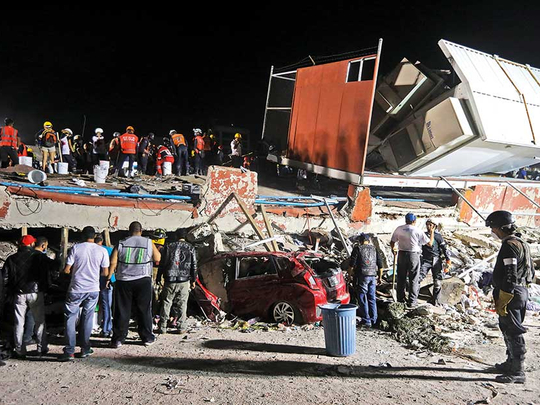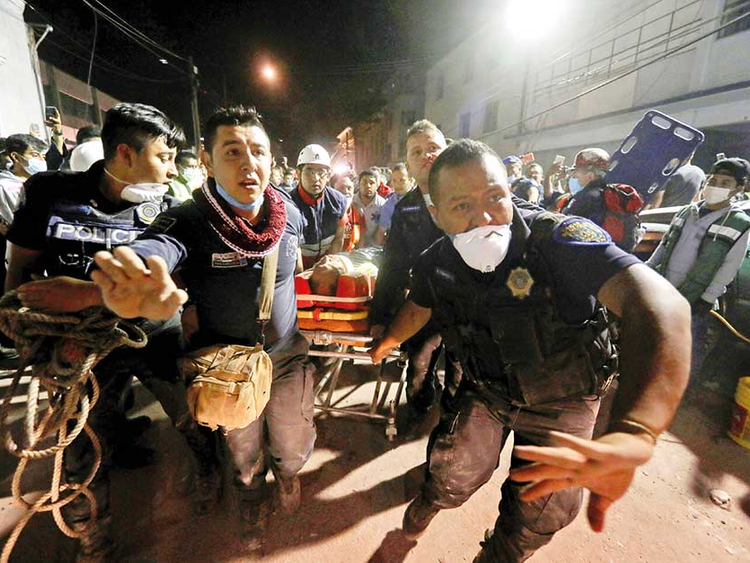
Mexico City: A small crowd pay its respects in front of a huge crater where a misshapen white mannequin, stacks of plastic buckets, and a dozen crushed vehicles are all that is left of the four-storey factory building which collapsed onto a packed car park.
At least 21 people were killed here in Colonia Obrera, one of Mexico City’s historic working class neighbourhoods, after it was instantly flattened by last month’s powerful earthquake.
Who died and who survived the collapse remains unknown and authorities have failed to produce a list of the companies and workers operating in the building — fuelling speculation that the building housed clandestine sweatshops staffed by undocumented migrants.
And with no official missing persons register, fears are mounting that many earthquake victims will go unidentified and unclaimed, especially if they came from abroad or belonged to the capital’s invisible army of informal workers who clean houses, cook street food, polish shoes and guard buildings.
In Mexico City, six out of every 10 workers are employed in a precarious, unregulated job characterised by poor conditions and negligible rights.
“Many people died at their place of work, but victims are never equal, and workers from the informal sector directly or indirectly affected by the earthquake could end up as collateral damage,” said Norma Cacho from labour rights organisation ProDESC.
“Of course authorities should know which companies and how many people work in such buildings, but irregularities are part of the city’s dynamic and with no clear information comes a lot of misinformation,” Cacho added.
False rescue stories, the diversion of donated aid and patchy delivery of official help has redoubled the angry mistrust many Mexicans feel for their politicians and their version of disastrous events.
Beatriz Gutierrez, 44, who owns a general store a few metres from the factory in Colonia Obrera, said that around 100 people worked in the building she witnessed collapse.
“It’s untrue that there were illegal immigrants working there, the factory girls who came into the shop every day were Mexican,” she said.
But who they were and what happened to them is unknown.
Company registers and survivor testimonies suggest the building also housed a toy export and car security companies, as well as a clothing accessory firm which lost six employees including its South Korean manager.
Not far from here, around 800 textile workshops were flattened in the 1985 earthquake, where thousands of impoverished women worked in deplorable conditions. The victims were never publicly identified — one reason why many are sceptical about the official death toll of the recent quake, which currently stands at 355. The factory building in Colonia Obrera suffered significant damage in 1985, but was nevertheless remodelled and partially used as government offices until 2015.
Rescue hampered
After the latest quake brought it down, initial rescue efforts here were hampered by telephone antennae mounted on the roof. In the initial days of the recovery process, it became the site of clashes as volunteer rescuers accused security forces of trying to bulldoze the building prematurely.
In the days immediately after the earthquake, Mexican authorities were repeatedly accused of attempting to clear away the rubble before rescue groups had exhausted their search for survivors.
In the immediate aftermath of the quake, Mexico witnessed an outpouring of civic sentiment, with legions of volunteers spontaneously organising themselves to help with rescue efforts and tend to survivors.
But the country’s rigid class divisions were also on show. The Mexico City daily El Universal ran a photo spread in its social pages highlighting the socialites and celebrities who joined in the clean-up operation.
“Domestic workers are invisible: many employers don’t know the surname of the person who works in their home, or where she comes from,” said Marcelina Bautista, founder of the centre for support and training for domestic workers (CACEH).
Since the quake, some domestic workers have been fired without receiving outstanding pay, according to Bautista.
Of the 250,000 working in the capital, 99 per cent have no formal contract and therefore little access to benefits like health care, sick pay, redundancy compensation.
“With no register of domestic workers, they can easily be ignored. If they didn’t exist before, they certainly won’t when it comes to compensation.”
— Guardian News & Media Ltd













